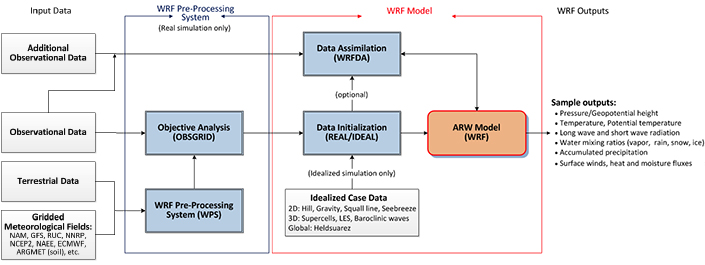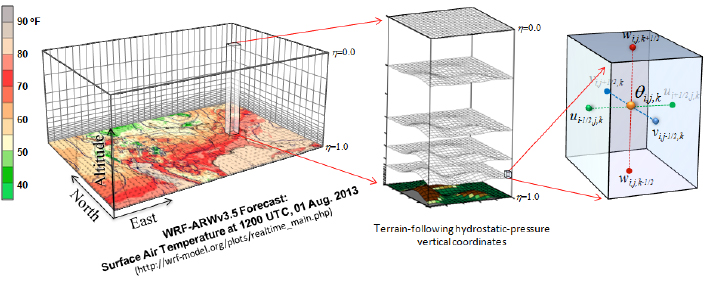The Weather Research and Forecasting (WRF) Model
WRF is a numerical weather prediction system designed to serve both atmospheric research and operational weather predication needs. It features two dynamics solvers (the Advanced Research WRF (ARW) and the Nonhydrostatic Mesoscale Model (NMM)), a data assimilation system, and a software architecture allowing for parallel computation and system extensibility. The WRF-ARW is suitable for a broad range of applications across scales ranging from meters to thousands of kilometers, including weather forecast research, idealized simulations (e.g., LES, convection, baroclinic waves), hurricane research as well as parameterization research, and coupled-model applications in air quality, wind energy and hydrological research studies. WRF-ARW allows researchers the ability to produce simulations reflecting either real or idealized atmospheric conditions by providing a vast array of physics and dynamics options, which include several different land-surface models, cloud microphysics schemes, planetary boundary layer schemes, and cumulus parameterizations. The WRF modeling system has Euclerian mass dynamic cores with terrain-following hydrostatic-pressure vertical coordinates. Advances in physics, numerics, and data assimilation contributed by the many research community developers are maintained and supported by the Mesoscale and Microscale Meteorology Division of NCAR.
Further Information
WRF Model Home Page: http://www.wrf-model.org
WRF Users Page: http://www.mmm.ucar.edu/wrf/users
Key Components of the WRF-ARW Modeling System

WRF 3D Grid Cell Representation

|





